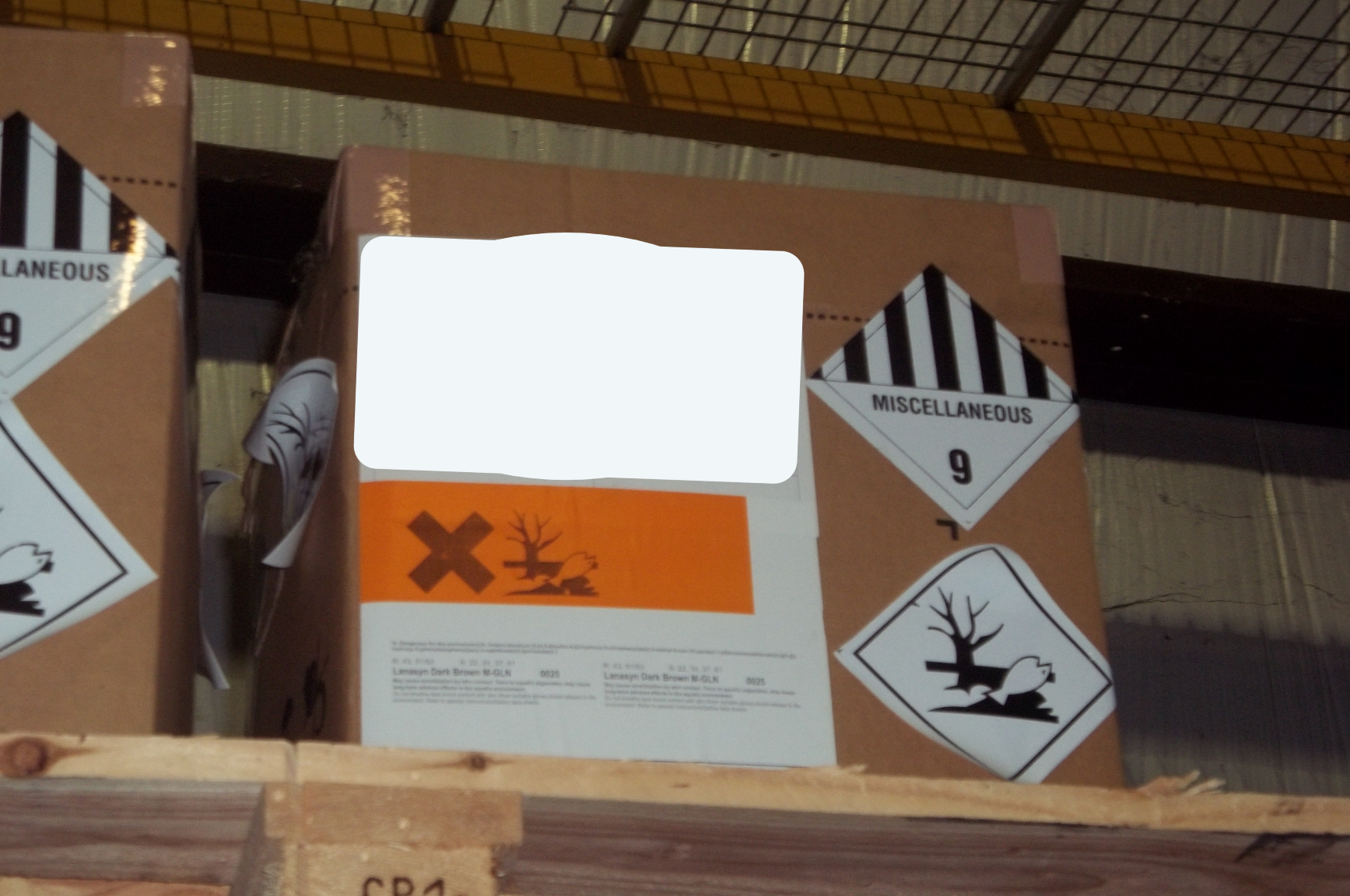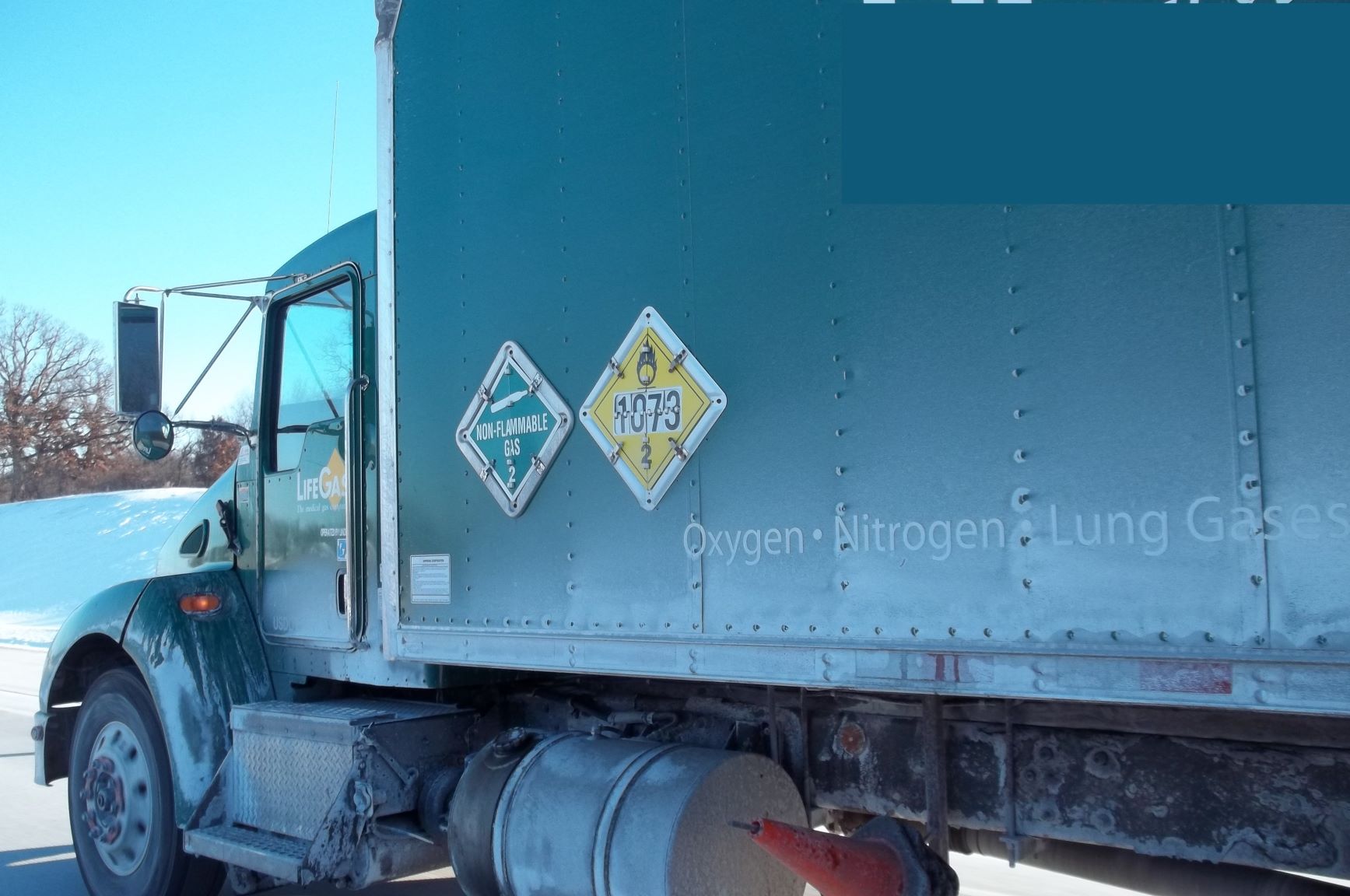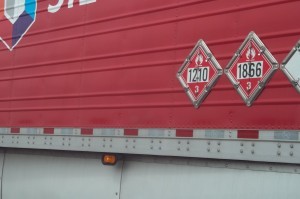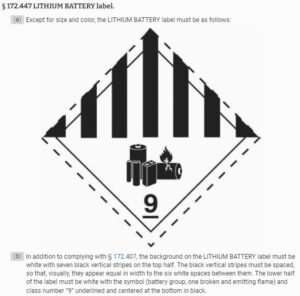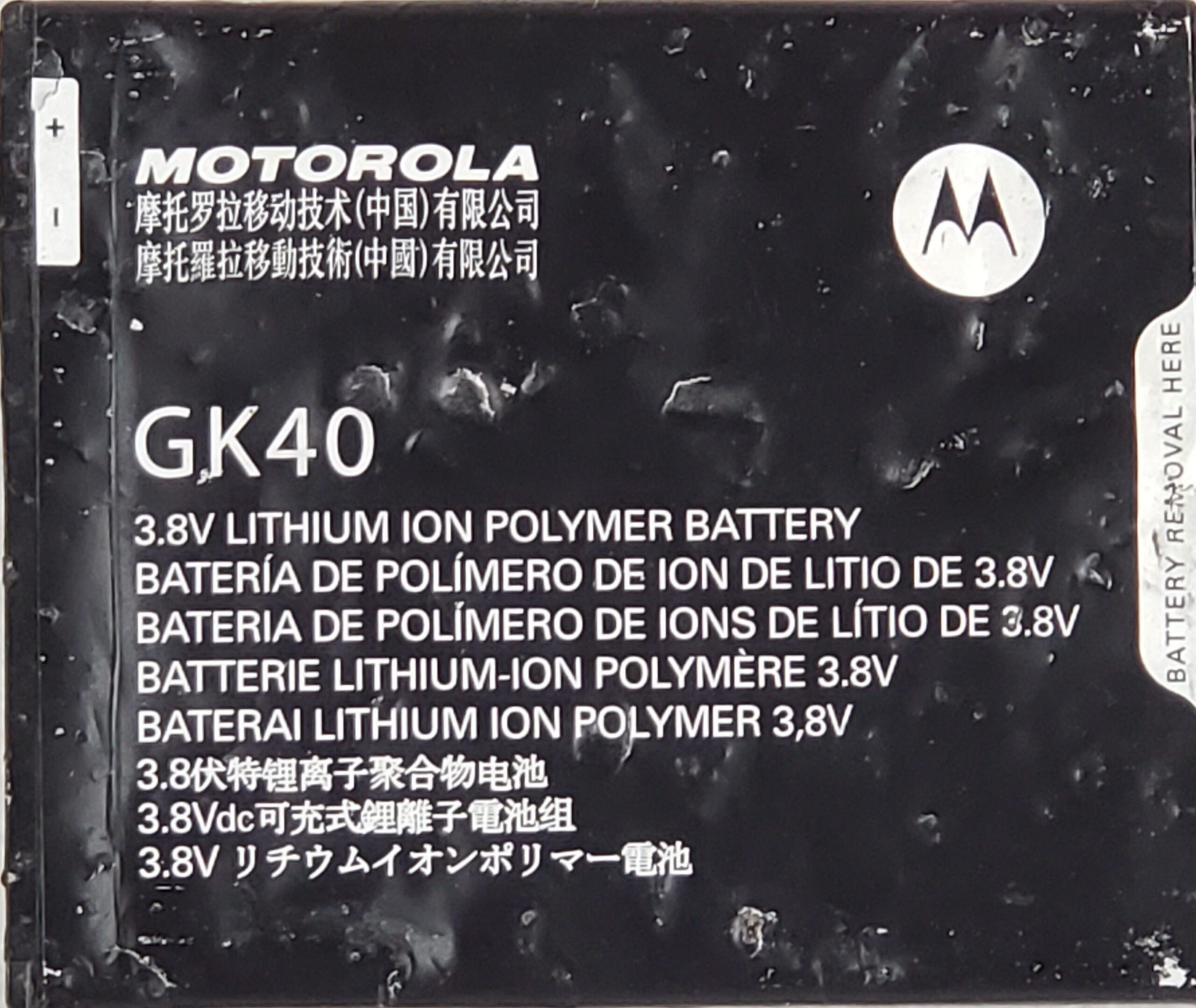Question1:
If I have a single 55 gallon drum that weighs over 882 is it considered a bulk… Hold it right there!
Answer1:
In an earlier article I addressed the false premise contained in that first question and explained that the packaging described (55-gallon drum) is not a bulk packaging and is violation of the HMR if it has a maximum net mass of more than 882 lbs; I suggest you read that article first (Q&A: Is a 55-gallon drum that weighs more than 882 pounds a bulk packaging?). In this article I’ll answer the remaining questions poased as if it is a bulk packaging (it isn’t).
Question2:
“…and would it require a un number…”?
Answer2:
“…and would it require a un number”?
- Yes. The HazMat’s identification number must be marked on both a bulk and non-bulk packaging.
- There are several options for the display of the identification number on a bulk packaging:
- A bulk packaging with a capacity of 3,785 L (1,000 gal) or more must display the identification number on all four sides.
- A bulk packaging with a capacity of less than 3,785 L (1,000 gal) may display the identificatin number on only two opposing sides.
- There are several options for the display of hazard communication on an intermediate bulk container (IBC).
Contact me with any questions you may have about the transportation of hazardous materials by air, highway, vessel, or rail International and Domestic Daniels Training Services, Inc. 815.821.1550 |
Question3:
“next question if I have a bulk container that requires a un number but I also have non bulk waste under the same un number do I have to placard my trailer with both the un number and a class placard or will the un number cover both.”?
Answer3:
- Both the placard and identification number must be displayed on the vehicle.
- If the identification number displayed on a bulk packaging is not visible in transportation, e.g., it is inside a cargo trailer, then it is necessary to display the identification number on all four sides of the vehicle.
- A bulk packaging containing any amount of any HazMat requires the vehicle to display the applicable placard for the HazMat on all four sides of the vehicle.
- In this case the vehicle must display the identification number and the applicable placard for the HazMat in the bulk packaging. This can be displayed in one of three ways:
- The identification number may be displayed on the placard.
- The identification number may be displayed near the placard on an orange panel.
- The identification number may be displayed near the placard on a white square-on-point.
- If an identification number is displayed on a vehicle it must represent all of the HazMat of that Class in the vehicle. Since you indicate you have a bulk and non-bulk packaging of the same identification number, a placard representing the Class and the identification number must be displayed on all four sides of the vehicle. Read: When not to Display and ID# on a Vehicle
I hope this helps. Please contact me with any other questions.
Conclusion:
A tough question because the inquisitor started with an incorrect understanding that its OK for a 55-gallon drum to weigh more than 882 lb – it’s not!
Sometimes knowing the right question to ask requires a basic understanding of the USDOT/PHMSA Hazardous Materials Regulations. My monthly HazMat Employee Training Webinars can do just that.




